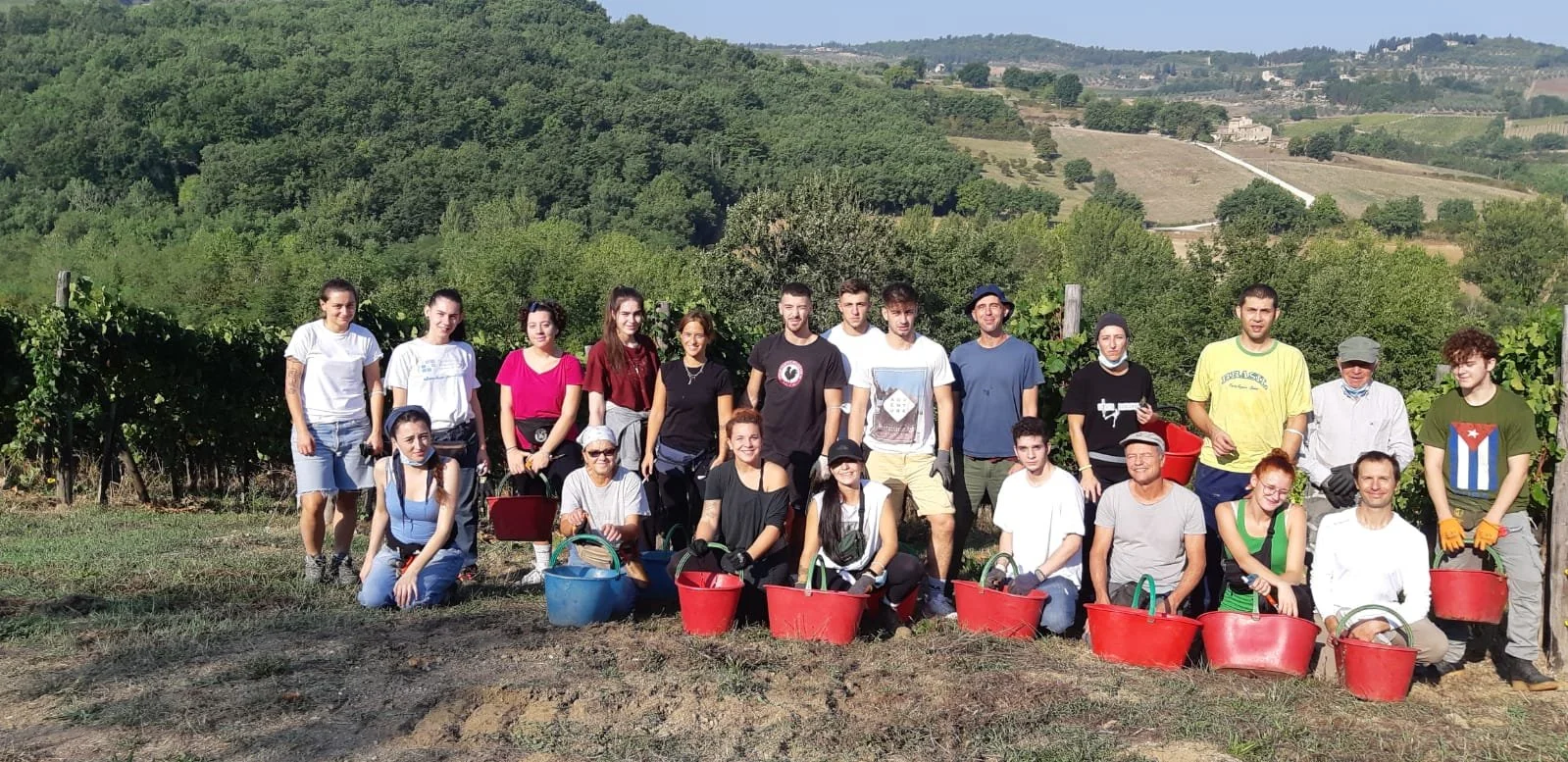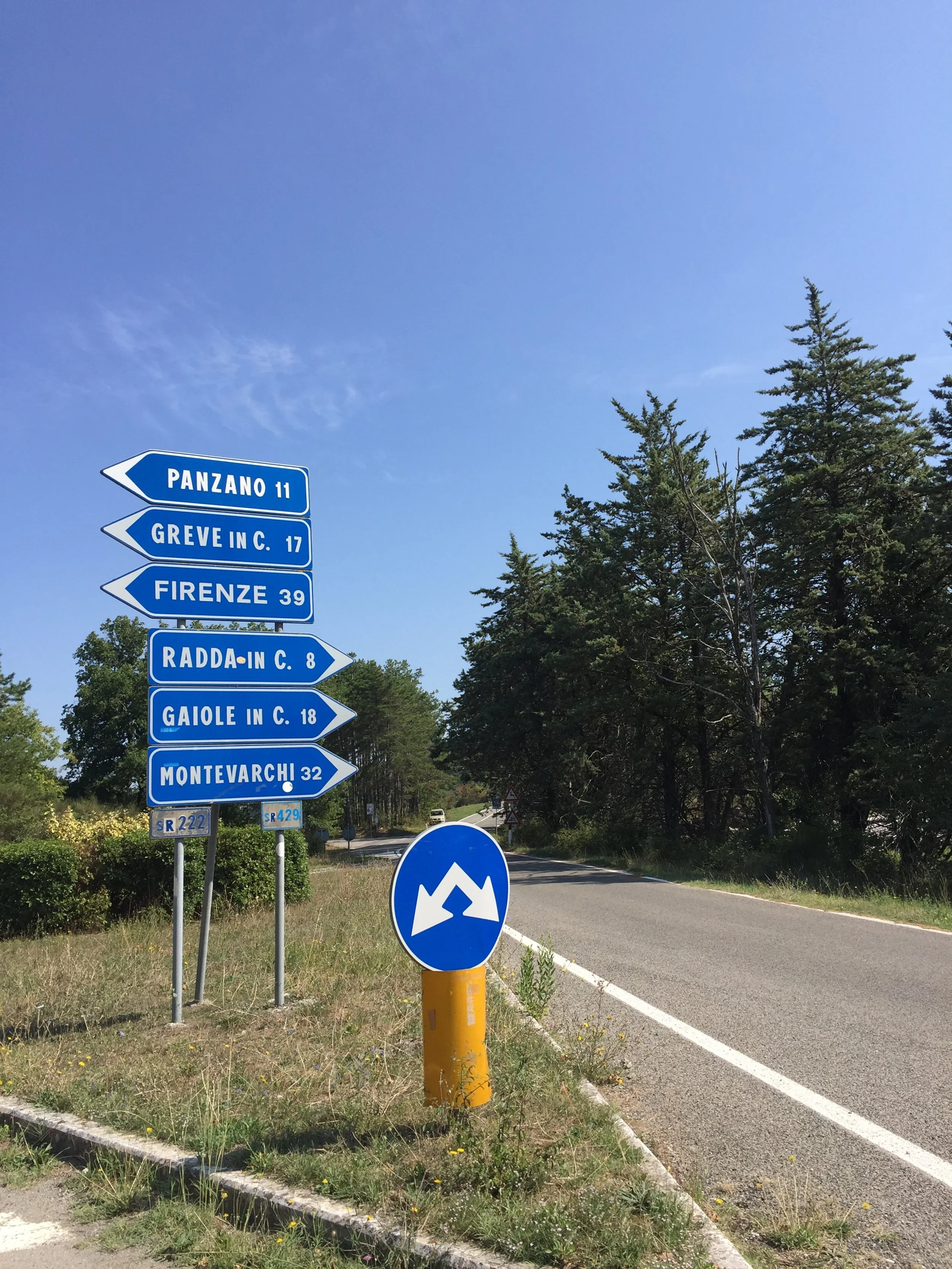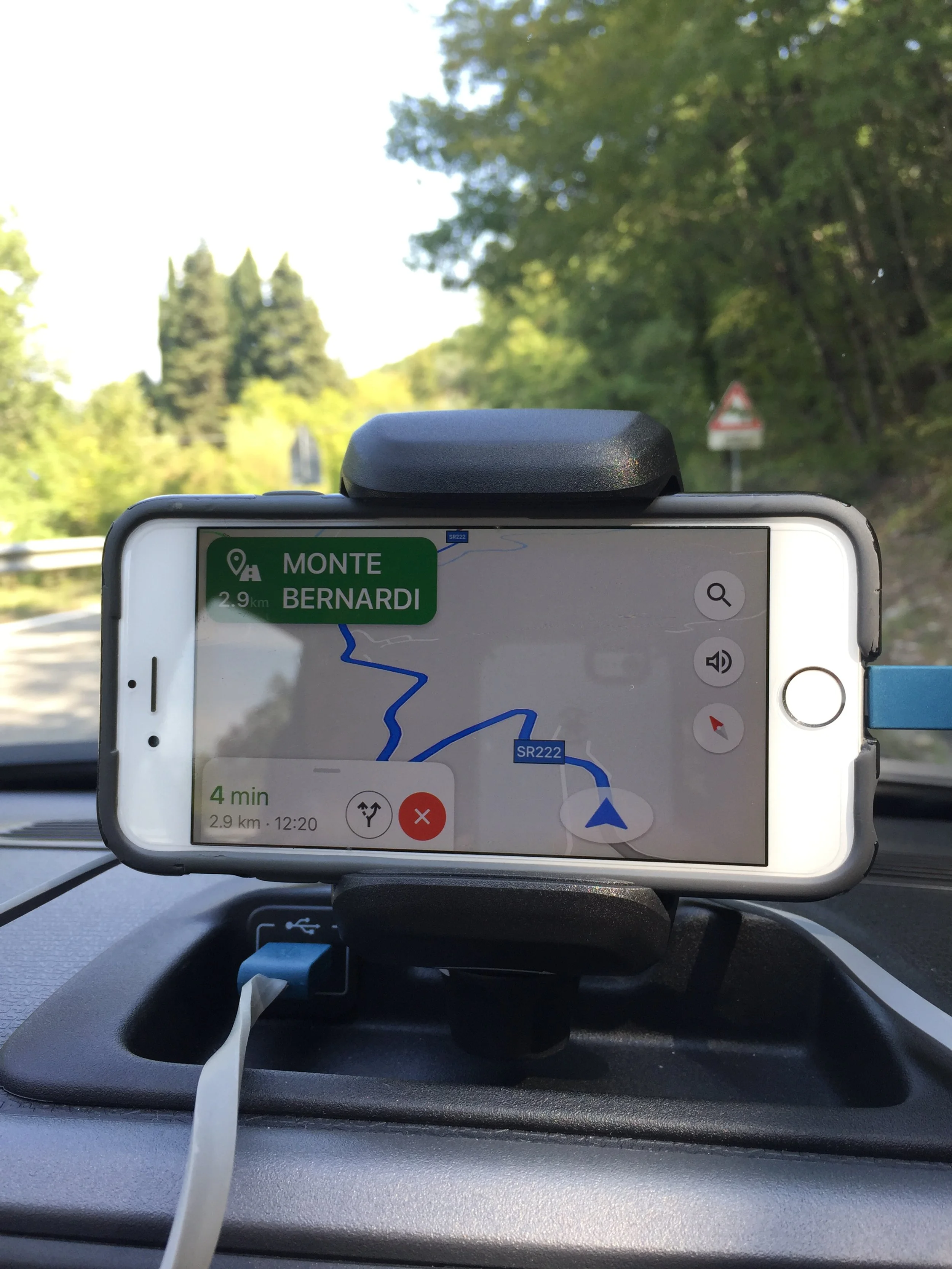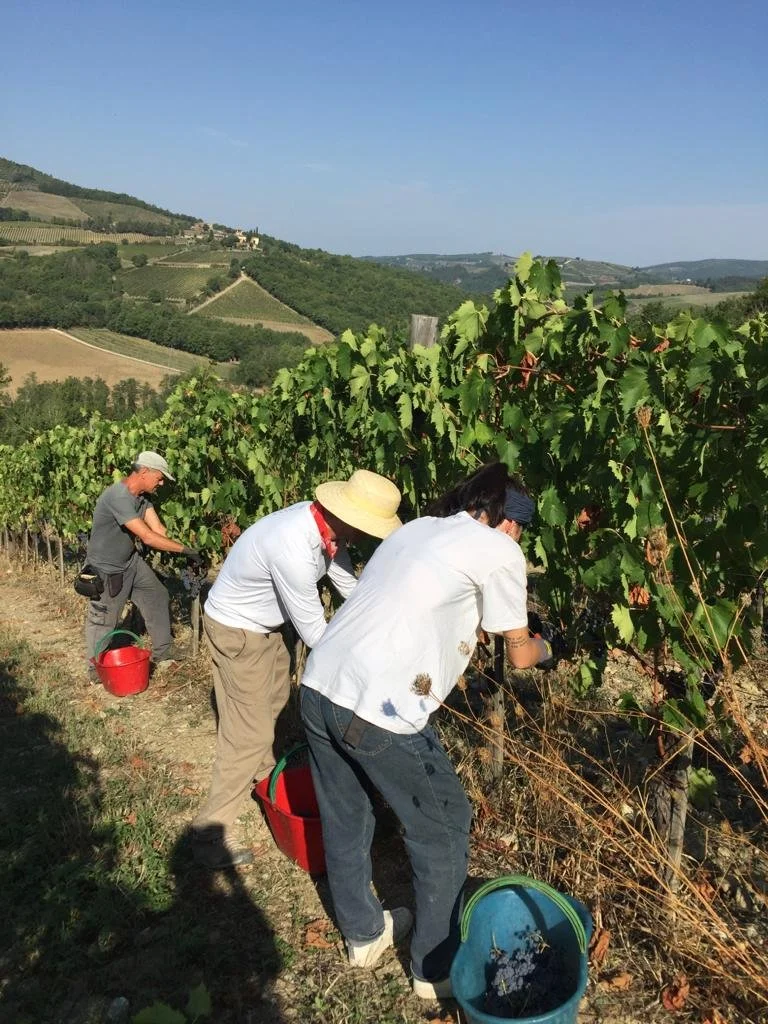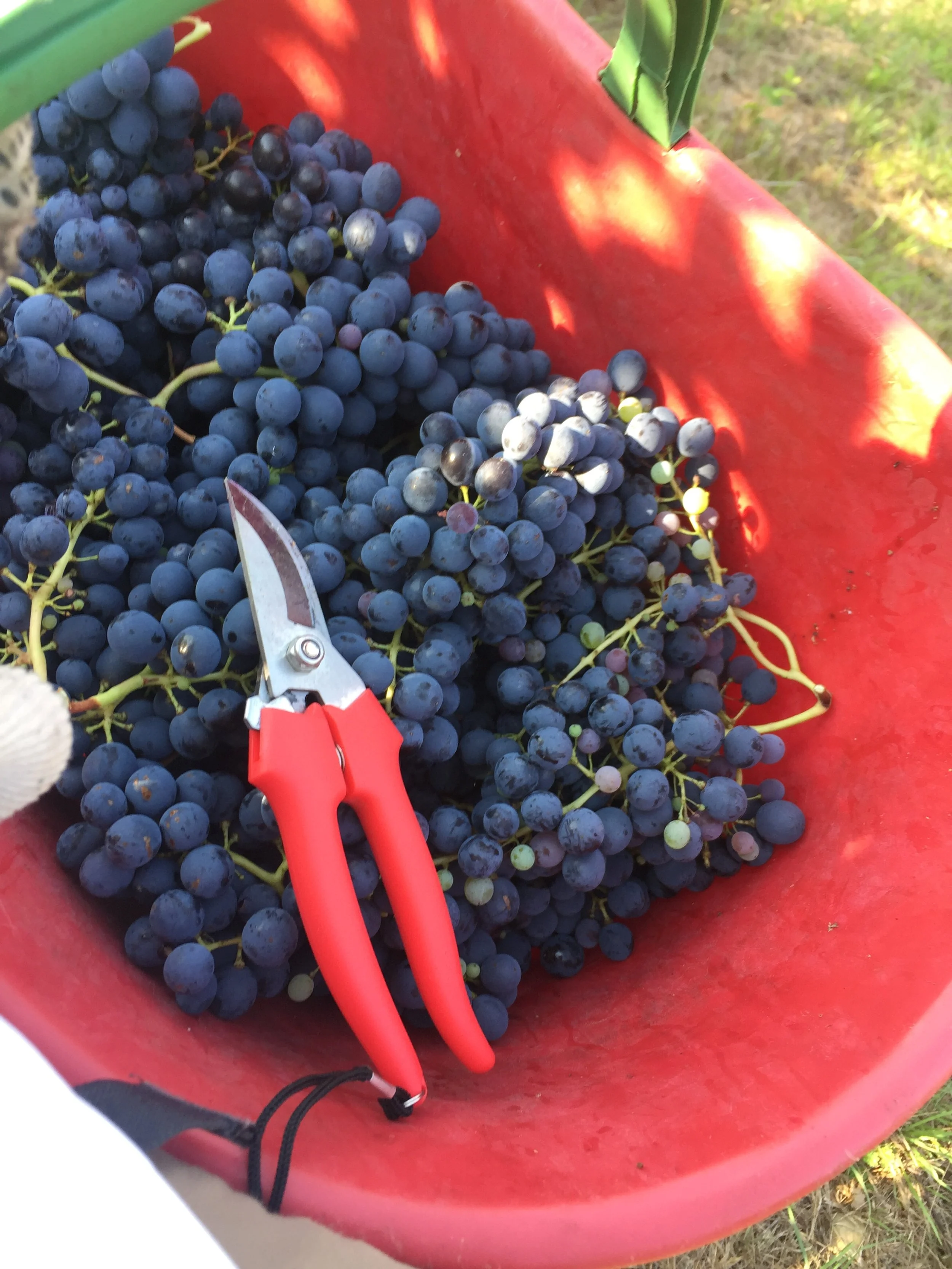A Sangiovese Harvest In The Heart of Chianti Classico
I love Sangiovese. It’s Italy’s most planted variety and certainly one of the most beloved. I have an intimate relationship with this grape thanks to working harvest and vinification in 2020 when we spent 4 months in the heart of Chianti Classico.
We arrived at Monte Bernardi in Panzano in Chianti on September 15. Harvest was set to begin in two days, enough time for us to settle into our new living space and get acclimated to the stunning surroundings. Admittedly, my Italian language skills were not prepared for working side by side with a squadra of chiantigani who only spoke Italian, but I learned all the important phrases quickly.
In earnest, I showed up to our meeting point 5 minutes before we were supposed to arrive to find out I was late. Everyone was ready, clippers in hand, to begin la vendemmia. Working a harvest had been a goal since I started my wine career, and the opportunity to do it in Chianti was beyond my wildest dreams. Needless to say, I was eager to learn everything there was to learn about this grape, from the vineyard to the bottle.
Right off the vine Sangiovese grapes tastes just like it does in the glass. I like to think of it as “sweet-tart,” a ripe attack balanced by elevated acidity. I probably ate an entire 25 kilo crate-worth while picking bunches, something done historically to provide calories and energy during harvest, but I was well-fed, so it was mostly out of longing for the taste.
It’s believed the name Sangiovese likely derives from “Sanguis jovis,” or blood of jove/jupiter, as a result of its pale color in the glass. This is due to the instability of malvin, one of the predominant color pigments in sangiovese, which does not bind to proteins during fermentation and oxidizes quickly, thus losing its color soon after bottling.
Sangiovese is early to bud and late to ripen, this makes it prone to early frosts and late-season rains. That year we didn't start harvesting Sangiovese until September 25. We had a storm of huge proportion mid-harvest, which would normally throw off the balance of the grapes, but thanks to the constant breeze and perfect canopy management, the clusters were able to dry out.
Like with any wine, factors like soil type, elevation, blending partners, and winemaking influence the final product, however, climate is a good barometer to assess Sangiovese style. For example, Sangiovese from the cooler, northern hills of Chianti Classico and Chianti Rufina produce wines with endless finesse, sour cherry tones, licorice, and violets. Sangiovese from the more southerly Chianti Classico area and even Montalcino, tend to be more dark cherry, plum, and aromatic herbs.
No matter the origin though, Sangiovese always shows its ruby to garnet color, high acidity, and evident chalky tannins.
Speaking of tannins, I often get asked, “How can I tell the difference between Sangiovese and Nebbiolo when blind tasting?” From my experience, the answer could be the tannins. Nebbiolo tends to be entirely-mouth-drying, while with Sangiovese you can almost pinpoint each granular on your palate. Both can be similar in color, ruby when young fading to garnet after a couple of years, so tannin could be your key.
Chianti Classico is probably the most consistent and best value wine out of Tuscany. Here are some recommended everyday drinkers:
Monte Bernardi Retromarcia Chianti Classico
Tolaini Chianti Classico
Badia a Coltibuono Chianti Classico
Castello di Volpaia Chianti Classico
Castello di Ama Chianti Classico
Also, make sure you get your hands on the 2020 Monte Bernardi Sa’Etta Chianti Classico Riserva before it’s gone. It received the Slow Wine Guide’s top award (la chiocciola, aka the snail). I spent many hours with that wine during fermentation doing twice-daily pumpovers. I can’t wait to taste it. Complements to Michael and the entire MB team.
There is so much more to Sangiovese and to the Chianti Classico region, all of which we cover during our upcoming Italian Wine Maestro course, starting October 8. Learn more and register here.
Oh, and Paula and I are leading a study trip to this very place in June 2024. Check out our study trip page for more details.

